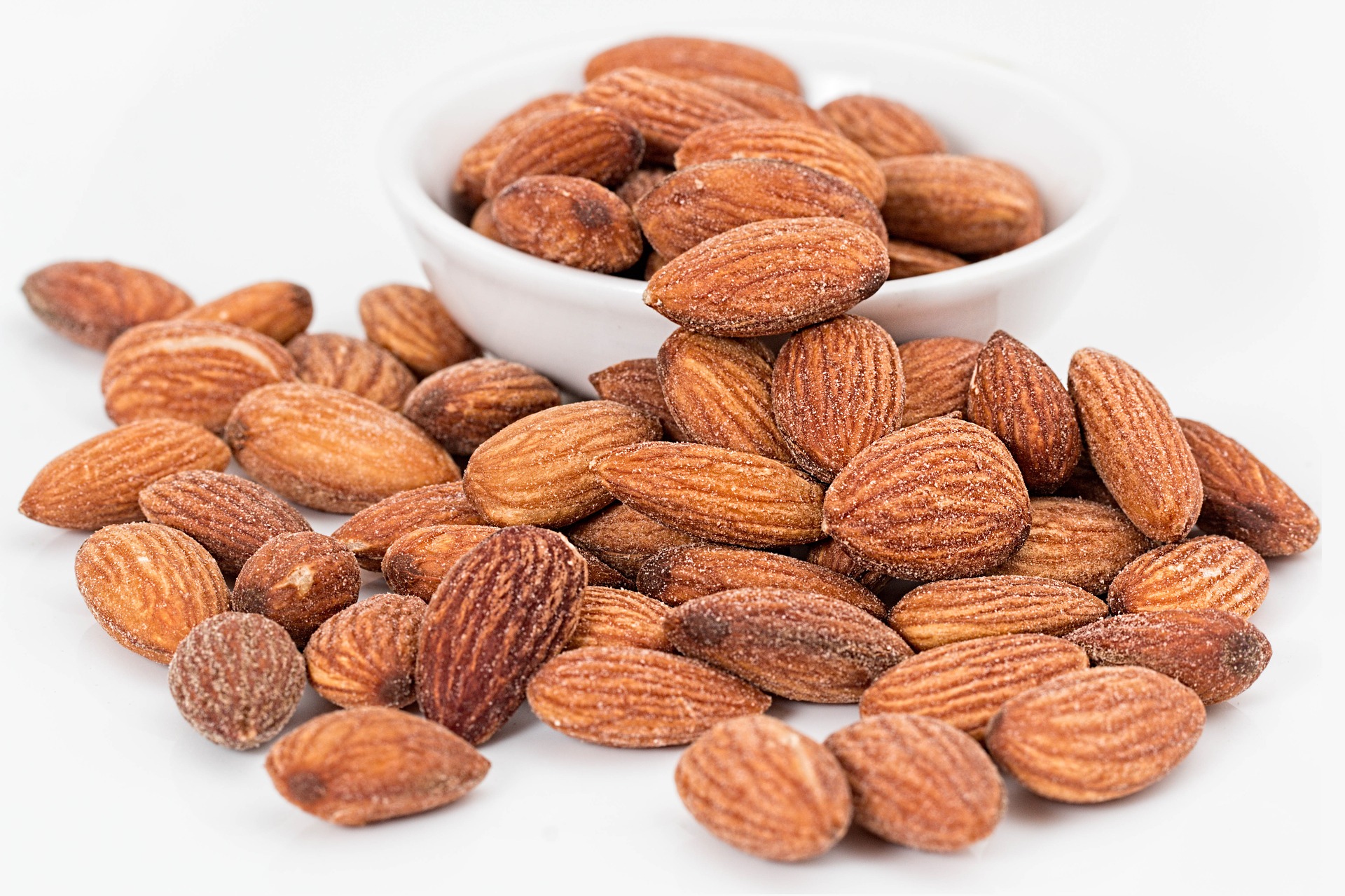The Canada Food Guide highlights the importance of plant-based foods for good overall health, but could they help improve the look of skin, too?
Emerging research from the University of California, Davis (UC Davis) examined how regular almond snacking may offer benefits for aging skin. The pilot trial – the first of its kind to examine the impact of almonds on skin health – was conducted under the direction of Dr. Raja Sivamani, associate professor of dermatology at UC Davis. The study specifically investigated the impact of daily almond snacking on facial wrinkles in postmenopausal women.1
More about the research:
28 postmenopausal women with Fitzpatrick skin type 1 or 2 (the skin types most susceptible to sunburn)
Study design:
Participants were randomly assigned to an almond snacking group or a control group. Those in the almond snacking group ate 20% of their daily calories from almonds – on average, 340 calories per day – roughly two one-ounce servings or ~60 grams. Those in the control group ate common nut-free snacks (cereal bars, granola bars or pretzels) also providing 20% of their daily calories.
The research team used high-definition photographic imaging to assess wrinkle width and severity along with measures of skin barrier function. Though measures of skin barrier function remained unchanged, after 16 weeks of daily snacking, photographic analysis showed improvements for women in the almond snack group vs. those in the control group:
- Wrinkle width decreased by 10%
- Wrinkle severity decreased by 9%
The results have inspired a larger and longer-term follow-up study is already underway with Sivamani’s research team at UC Davis.
Essential nutrients to complement your skin care routine
When it comes to nutrition, almonds deliver 6 grams of plant protein, 4g of fibre and multiple essential vitamins and minerals. Here’s what you get in a one-ounce handful. (Study participants ate two one-ounce servings.)
Study at a Glance
The Study: 28 healthy, postmenopausal women with Fitzpatrick skin type 1 (always burns, never tans) or 2 (usually burns, tans minimally) were randomly assigned to either an intervention or a control group. Almonds were provided as 20% of total daily calorie intake for the intervention group (340 calories/day on average), about 2 one-ounce servings. The control group consumed a calorie-matched nut-free snack in place of almonds daily: cereal bar, energy bar or pretzels. All participants were advised not to consume any nuts or nut-containing products over the course of the study (except for the almond snack for the intervention group). They otherwise were advised to continue their usual daily energy intake. After a four-week dietary wash-out period, participants were randomized to one of the two study groups detailed above. Study visits occurred at baseline, 4 weeks, 8 weeks, 12 weeks and 16 weeks. Facial wrinkles were assessed using high-resolution facial photography and validated 3D facial modeling and measurement at baseline, 8 weeks and 16 weeks. Skin barrier function was assessed by measurement of sebum production and transepidermal water loss (TEWL).
Results:
- Photographic image analysis showed that the almond group had significant reductions in wrinkle severity and width, by 9 and 10%, respectively, compared to the control group at the 16-week time point (P<0.02).
- There were no significant differences in sebum production between groups after 8 or 16 weeks.
- There were no significant differences between groups in transepidermal water loss (TEWL) from baseline after 8 or 16 weeks.
- There were no significant changes from baseline in skin barrier function (P=0.65) between the almond and control groups relative to baseline after 16 weeks.
Study Limitations: Aging is a long-term process so the findings from this 16-week study may be difficult to reproduce and generalize to extended periods of time. Skin-aging is also multi-factorial in nature and although certain groups were excluded (i.e., those with a smoking history), there is variance in aging confounders, such as frequency of UV light exposure and emotional stress, which were outside the scope of the study. This study was limited to cosmetic evaluation, as no measurements were made regarding collagen production. Study did not evaluate disease or younger subjects, so results are limited to otherwise healthy post-menopausal females. In addition, this was a pilot study with a limited number of participants. Future studies should expand to a larger recruitment pool.
Conclusion: Results of this pilot study suggest that daily consumption of almonds may play a role in reducing wrinkle severity in post-menopausal women. The outcomes warrant future studies with expanded population groups and additional evaluations for signs of skin aging.
1. Foolad N, Vaughn AR, Rybak I, Burney WA, Chodur GM, Newman JW, Steinberg FM, Sivamani RK. Prospective randomized controlled pilot study on the effects of almond consumption on skin lipids and wrinkles. Phytotherapy Research. 2019;1–6. https://doi.org/10.1002/ptr.6495
